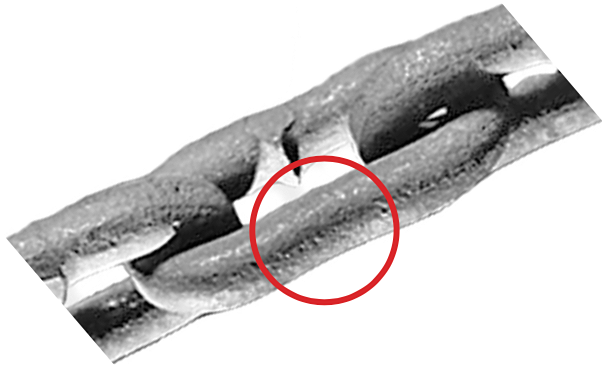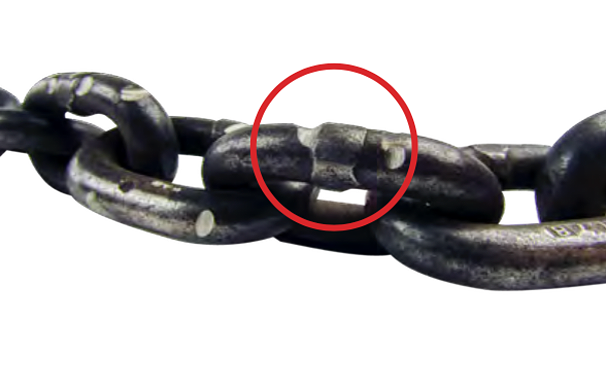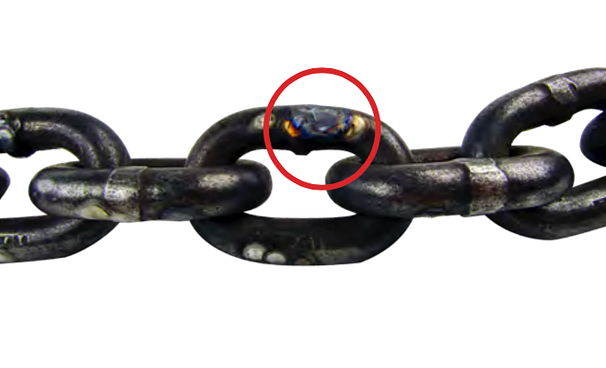Chain Inspection Process
Ensuring chain safety relies on thorough inspections and proactive maintenance. Following key practices like regular checks, using qualified inspectors, visual protocols, specialized tools, and solid maintenance plans ensures equipment longevity and workplace safety. These practices aren't just checkboxes; they're investments in worker safety, smooth operations, and business success.
Why Regular Chain Inspections are Critical
Regular chain inspections are critical due to several reasons that directly impact safety, operational efficiency, and equipment longevity:
Safety Assurance: Chains bear heavy loads and facilitate crucial tasks in industries like construction, manufacturing, and logistics. Regular inspections ensure their structural integrity, minimizing the risk of sudden failures or accidents that could endanger workers' safety.
Preventing Costly Downtime: Identifying issues early through inspections allows for proactive maintenance. This proactive approach prevents unexpected breakdowns, reducing costly downtime that halts operations and disrupts productivity.
Equipment Longevity: Chains subjected to harsh environments, heavy loads, and frequent usage are prone to wear and tear. Regular inspections help identify signs of wear, corrosion, or damage, allowing for timely maintenance or replacements, thus extending the lifespan of the equipment.
Compliance with Standards: Various industries have specific regulations and safety standards for equipment usage. Regular chain inspections ensure compliance with these standards, reducing the risk of non-compliance-related penalties or legal issues.
Operational Efficiency: Well-maintained chains contribute to smoother operations. Ensuring chains are in optimal condition minimizes disruptions, allowing machinery and equipment to function efficiently and reliably.
Regular chain inspections are critical as they not only prioritize safety but also prevent unexpected downtime, ensure compliance, and prolong the life of equipment, contributing to overall operational efficiency and employee well-being.
What to Look for in the Chain Inspection Process
The chain inspection process involves looking out for and identifying several issues in order to ensure thorough assessment and maintenance:
Stretched Chain links: Signs of lengthened and narrowed links, along with restricted movement between adjacent links, signify potential stretching that mandates immediate removal from service. Yet, stretch damage can stealthily occur without visible signs, indicating severe overload or sudden shock loading on the sling system. Steers clear of overloading and sudden shock loading to prevent potential damage to the sling system.
Bent links: Bending tends to concentrate in one or two neighboring links, causing irregular shapes compared to the others. Bent links often arise as a result of the chain encountering sharp edges of loads during lifting. To prevent this, ensure load edges are padded to safeguard both the chain and the load from potential damage.
Weld Spatter: The effects of weld spatter can be identified as metallic bumps on any chain link. The heat from weld spatter has the potential to adversely affect the strength of chain link. As a result, slings must be shielded from welding operations.
Gouged links: Such links can be identified as any indentations on an otherwise smooth link surface. Gouging of links is most commonly caused as a result of heavy loads being dragged over or dropped onto the chain. Slings, therefore, must be protected from these situations in order to avoid damage.
Heat Damage: This can be seen as areas of discoloration on a chain. High temperatures begin to affect alloy chain strength at 400°F.
Worn links: Excessive wear and a reduction of the material diameter, especially at the bearing points is a natural result of sling use. While wear is inevitable, keeping load weights within the ratings of the slings being used will ensure prolonged sling durability and maximum wear life.
By following these key steps, organizations can ensure comprehensive chain inspections, maintain safety standards, and prolong the service life of chains used in various industrial applications.
Best Practices for Conducting Effective Chain Inspection
Effective chain inspection involves adhering to best practices to ensure thorough assessments and maintenance. Here are key best practices for conducting effective chain inspections:
Regular Inspection Schedule: Establish a routine inspection schedule based on industry standards, manufacturer recommendations, and equipment usage. Regular inspections prevent surprises and allow for proactive maintenance.
Qualified Inspectors: Trained and certified inspectors should conduct chain inspections. They possess the expertise to identify potential issues and ensure compliance with safety standards.
Visual Inspection Protocols: Follow systematic visual inspection protocols to detect visible signs of wear, deformation, corrosion, or irregularities in chain links. Inspect all sections of the chain thoroughly, paying attention to critical stress points.
Specialized Tools and Equipment: Utilize specialized tools such as calipers, micrometers, or wear gauges to accurately measure wear, elongation, or stretch in chain links. Proper tools ensure precise assessments.
Comprehensive Maintenance Plan: Develop a comprehensive maintenance plan based on inspection findings. Address identified issues promptly, including repairing damaged links, replacing worn components, or adjusting tension.
Conclusion
In conclusion, the necessity of regular chain inspections is paramount, resonating across industries for ensuring safety, bolstering operational efficiency, and extending the longevity of equipment. These practices transcend mere compliance; they constitute an investment in the safety of the workforce, the seamless continuity of operations, and the overarching success of the enterprise. Their implementation signifies not just a requirement but a strategic commitment to fostering a culture of safety, reliability, and sustained productivity within the operational landscape.






